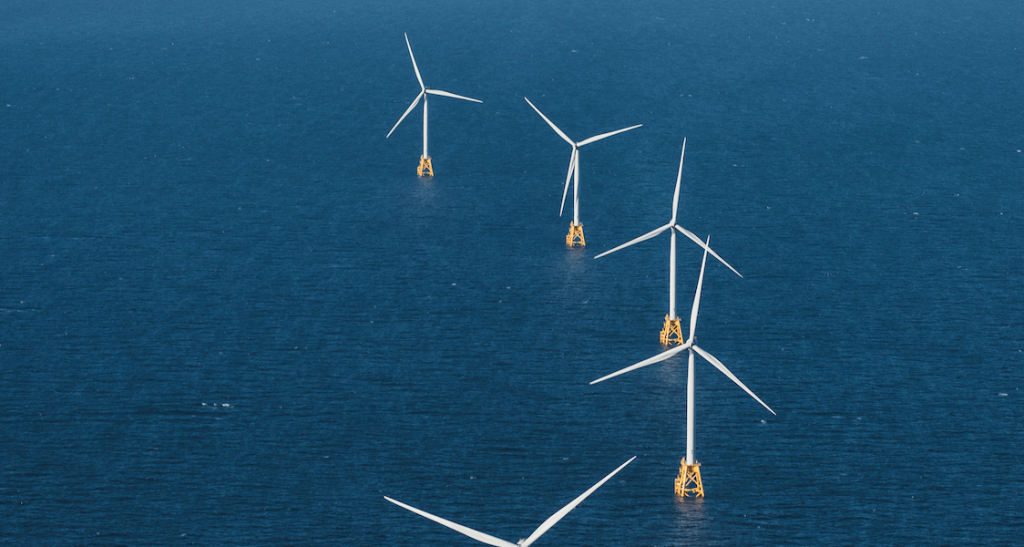OCEAN CITY – Ocean Wind 1 suffered a setback when Ocean City rejected Orsted’s bid to use protected land as landfall points for the cabling associated with the project’s offshore wind turbines.
Orsted is currently appealing this decision and hopes that the State of New Jersey, through the New Jersey Board of Public Utilities (NJBPU), will intervene and allow Orsted to use Ocean City’s land despite the city’s rejection and dissatisfaction with the project.
Orsted made a case for their Green Acres cable route, which would lay cables 60 feet underneath Ocean City’s 35th Street beach, at an early-morning NJBPU meeting May 19.
Ocean City politicians and residents spoke out against the project, and citizens expressed concerns about the impact that the project could have on their city.
Madeline Urbish, head of government affairs and policy at Orsted, said that an onshore cable is necessary to transfer electricity from the turbines. The current proposed cable path would sit 60 feet underneath 35th Street, West Bay Avenue, and Roosevelt Boulevard. Urbish noted that this path is the only reasonable solution for the cabling.
She said that Orsted has made several attempts to reach an agreement with Ocean City, but none have resulted in an agreement, adding that Orsted “still hopes to reach such agreements and remains ready and willing to reach a voluntary agreement with Ocean City,” and that they still plan for the first phase of the project to be “commercial ready” by 2024.
David Wand, a representative from New Jersey’s Division of the Rate Counsel, expressed several concerns at the meeting about the way that Orsted, and Ocean Wind 1, have presented their case thus far.
The Rate Counsel is a state agency that represents the consumer’s interests in energy, water, and telecommunication policy. It is involved with projects like Ocean Wind 1 to help ensure that the outcome is the most equitable for the end consumer.
Wand also said that another route for the cabling, one through old railroad lines, could still be a viable alternative, and that the costs associated with that possibility need to be reasonably explored before the Green Acres route is declared the only viable option.
Wand expressed concern that the “piecemeal” hearings, where only small parts of the project are discussed at a time, on Ocean Wind 1 will pre-determine future decisions unfairly in Ocean Wind’s favor. He also called into question Orsted’s decision not to disclose the costs of different cabling paths. Without these numbers, it is not possible to know if the cabling route Orsted is currently seeking, under the 35th Street beach and under Green Acres land, is the best one, he said.
Wand recommends that future meeting schedules be modified, and that Ocean Wind provide cost estimates for different cabling routes.
Ocean City residents attended the virtual hearing to express general frustration with the project and with the way meetings have been conducted.
Jim Plousis, a lifelong resident of Ocean City, said that he feels “misled” about the project’s costs, including the costs associated with ongoing maintenance.
Suzanne Hornrick, a local activist against the turbine project, said that she “only found out about the meeting last night, very late.” She gave an impassioned speech about the potential health effects that the underground cabling would have on Ocean City’s population. She said that the electromagnetic field generated by the cables will cause cancer, bone disease, and birth defects.
Hornrick told officials at the meeting: “If you approve this, there are going to be serious consequences, including people laying across the beach to stop the cable being laid.”
Similar health concerns were repeated by several members of the public, includingMike DeVlieger, a former Ocean City Council member. DeVlieger expressed concerns about the project’s theoretical health and environmental impacts.
“Our community is against this,” he said. “They are against this line coming through our beaches; they are against it running past our playground, our sand, our ballfields and throughout streets. It presents medical concerns; it presents environmental concerns…”
DeVlieger added that there are viable alternative routes for the project that do not go through Green Acres land.
There are currently no studies that link the cables used by Ocean Wind with serious health risks. Over 20 studies, including one by the National Library of Medicine, concluded that the health risks associated with wind turbines are negligible. The unsubstantiated theory that wind turbines are linked to cancer diagnoses was popularized by Donald Trump during his presidency.
Doug O’Malley, state director with Environment New Jersey, asked those who spoke against the project to consider the long-term picture. He said that climate change will deeply affect places like Ocean City, and that the turbines, and the way that they orient away from fossil fuels, are part of the long-term solution.
Joseph Fiordaliso, president of the NJBPU, said that Ocean City declined to comment at the May 19 meeting on its decision to block Orsted from using Green Acres land. This statement spurred emotions from meeting attendees, including Bobby Barr, sitting Ocean City Council president.
Barr said that he “was not aware of this morning’s meeting,” and is pursuing options to submit written comment.
Fiordaliso said that there was never any intention to mislead the public on the morning’s meeting and concluded that some form of miscommunication must have occurred to cause the confusion.
“We are here to learn, and that’s why we are here,” he said. “It is extremely important to me, as the president of this board, that transparency is of utmost importance.”
Referring to the NJBPU, he said: “If there isn’t faith in the institution, the institution is ineffective.”
The battle for Ocean Wind’s onshore cabling continues. Orsted still hopes that the cabling can make landfall on Ocean City’s Green Acres land and hopes for a NJBPU decision that will allow them to acquire the land against Ocean City’s wishes.
The Ocean Wind I project is part of a larger New Jersey initiative to bolster the state’s usable renewable energy. Executive Order No. 8, signed by Gov. Phil Murphy in 2018, set a goal of 3,500 megawatts of renewable energy by 2030, and Executive Order No. 94 increased that goal to 7,500 megawatts of power by 2035.
Orsted claims that the Ocean Wind I project will provide enough energy for 500,000 homes.
To contact Collin Hall, email chall@cmcherald.com.







